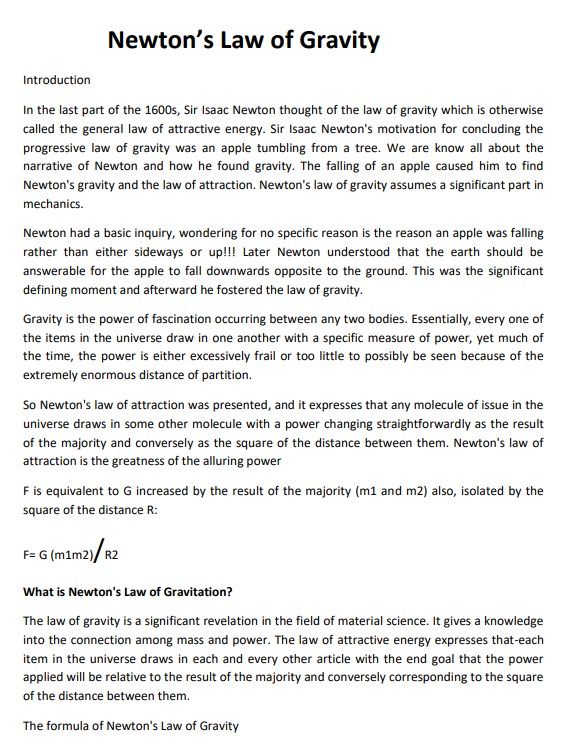Law of Gravity by Newton
Summary:
This note explores the Law of Gravity by Newton, which was formulated by Sir Isaac Newton in the late 1600s. Newton was inspired to develop this law when he observed an apple falling from a tree. He realized that the Earth’s gravitational force was responsible for the apple’s downward motion, leading to his groundbreaking discovery.
Gravity is the force of attraction between any two bodies in the universe. Newton’s Law of Gravity states that every object in the universe attracts every other object with a force that is directly proportional to the product of their masses and inversely proportional to the square of the distance between them. The formula for Newton’s Law of Gravity is F = G(m1m2)/R^2, where F represents the force of gravity, G is the gravitational constant, m1 and m2 are the masses of the two objects, and R is the distance between them.
The law of gravity plays a significant role in mechanics and helps explain the relationship between mass and force. It reveals that the magnitude of the force acting between two point masses is directly proportional to their masses and decreases rapidly as the distance between them increases.
The note also discusses the properties of gravitational force, such as being a central, mutual, attractive, and long-range force. Weight is introduced as the gravitational force acting on an object, which is determined by multiplying the object’s mass by the acceleration due to gravity. The distinction between mass and weight is clarified, emphasizing that they are related but distinct concepts.
Excerpt:
Law of Gravity by Newton
Introduction
In the last part of the 1600s, Sir Isaac Newton thought of the law of gravity, which is otherwise called the general law of attractive energy. Sir Isaac Newton’s motivation for concluding the progressive law of gravity was an apple tumbling from a tree. We know all about the narrative of Newton and how he found gravity. The falling of an apple caused him to find Newton’s gravity and the law of attraction. Newton’s law of gravity assumes a significant part in mechanics.


Reviews